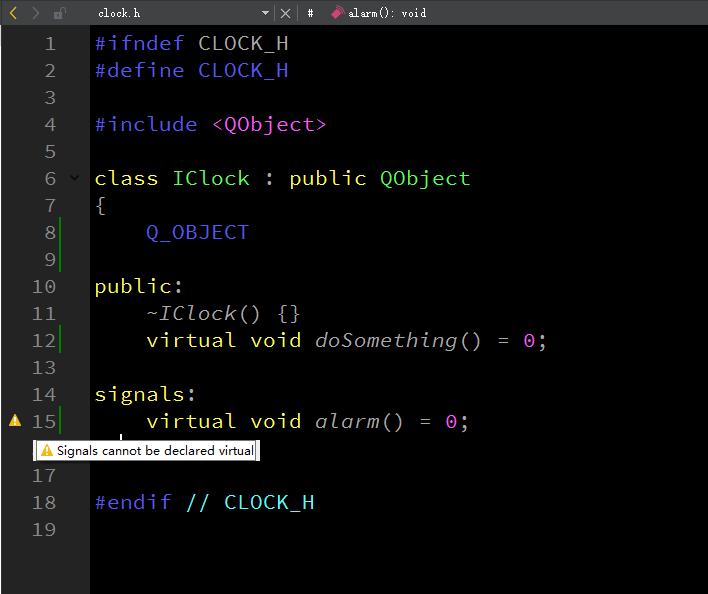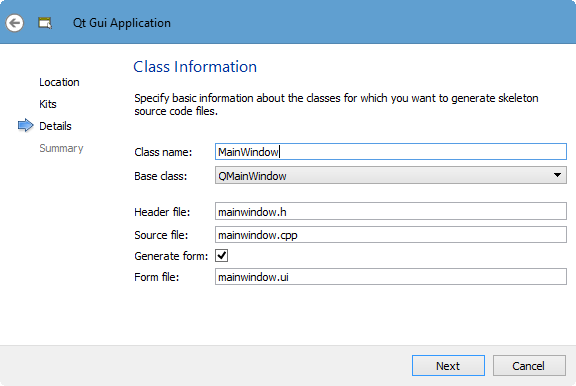C++ signal to QML slot in Qt
Solutions/Answers:
Signals and slots are loosely coupled: A class which emits a signal neither knows nor cares which slots receive the signal. Rome and egypt slot free online. Qt's signals and slots mechanism ensures that if you connect a signal to a slot, the slot will be called with the signal's parameters at the right time. Signals and slots can take any number of arguments of any type. Each PyQt widget, which is derived from QObject class, is designed to emit ‘signal’ in response to one or more events. The signal on its own does not perform any action. Instead, it is ‘connected’ to a ‘slot’. The slot can be any callable Python function. In PyQt, connection between a signal and a slot can be achieved in different ways.
Answer 1:
I think it would be best if you check this tutorial:
especially this section:
I think your mistake in this case might either be that you didn’t declare it as a slot or you didn’t make it invocable. Both options are explained in the Qt Tutorial.
Also, you need to use a QVariant in order to exchange data between C++ and QML.
You can also register types, e.g. Widgets and stuff, so that you can use them in QML as a “native” type like a rectangle. In most cases this is not recommended, except if you need some certain extern class or some data that you cannot display otherwise in your QML Interface.
The reason for the QVariant is the Script based approach of QML. The QVariant basically contains your data and a desription of the data type, so that the QML knows how to handle it properly. High limit slot machines quora. That’s why you have to specify the parameter in QML with String, int etc. But the original data exchange with C++ remains a QVariant
I have used the qmlRegisterType before, but it is a very inconvenient Solution for simple data types. It is rather used for more complex data, such as custom Widgets, Canvas or Video elements that QML does not natively support or extended QStandardItemModels . It is a more convenient way to exchange data between QML and C++ and does not need Signals or Slots in first instance, because the QStandardItemModel updates the GUI automatically. For using the QStandardItemModel you need to register the Type with qmlRegisterType. . The Model can then be used in Model based Views such as the ListView etc.
I attached a tutorial for this topic, it describes how to use the QListModel.
Answer 2:

You should use Connections in this case (maybe it’s the only way to connect).
Put your object myObj to QML file by
setContextPropertyThis means that for all winning combinations the machine will pay back twice as much when you bet two coins, three times as much when you bet three coins and so on. In fact, most progressive slot machines do not give the player an opportunity to win the jackpot unless they are making the maximum coin bet. You can do this by examining the payout chart of a slot machine before you start to play. How to open up a business with slot machines. However, a majority of slot machines are progressive slot machines, meaning they offer bigger payouts to players who bet with more coins. Some machines offer proportional payouts.
Your signal is
In QML file, add Connectios likes below:
Our Awesome Free Tools
References
Signals and slots is a language construct introduced in Qt for communication between objects[1] which makes it easy to implement the observer pattern while avoiding boilerplate code. The concept is that GUI widgets can send signals containing event information which can be received by other widgets / controls using special functions known as slots. This is similar to C/C++ function pointers, but signal/slot system ensures the type-correctness of callback arguments.[citation needed]

The signal/slot system fits well with the way graphical user interfaces are designed. Similarly, the signal/slot system can be used for other non-GUI usages, for example asynchronous I/O (including sockets, pipes, serial devices, etc.) event notification or to associate timeout events with appropriate object instances and methods or functions. It is easy to use and no registration/deregistration/invocation code need to be written, because Qt's metaobject compiler (MOC) automatically generates the needed infrastructure.
A commonly used metaphor is a spreadsheet. A spreadsheet has cells that observe the source cell(s). When the source cell is changed, the dependent cells are updated from the event.
Alternative implementations[edit]
There are some implementations of signal/slot systems based on C++ templates, which don't require the extra metaobject compiler, as used by Qt, such as libsigc++, sigslot, vdk-signals, nano-signal-slot, neosigslot, Signals, boost.signals2, Synapse, Cpp::Events, Platinum and JBroadcaster. Common Language Infrastructure (CLI) languages such as C# also supports a similar construct although with a different terminology and syntax: events play the role of signals, and delegates are the slots. Another implementation of signals exists for ActionScript 3.0, inspired by C# events and signals/slots in Qt. Additionally, a delegate can be a local variable, much like a function pointer, while a slot in Qt must be a class member declared as such. The C based GObject system also provides similar functionality via GSignal.In D it is implemented by std.signals.

See also[edit]
Libraries[edit]
Java: sig4j - multi-threaded, type-safe, based on the FunctionalInterface annotation introduced in Java 8. Mgm grand casino detroit floor plan.
C++: vdk-signals - thread-safe, type-safe, written in C++11 with atomic variables.
References[edit]
Qt Connect Class Slots To Designer Signals
- ^'Signals & Slots - QtCore 5.1'. Qt Project. 2013-07-04. Retrieved 2013-07-04.